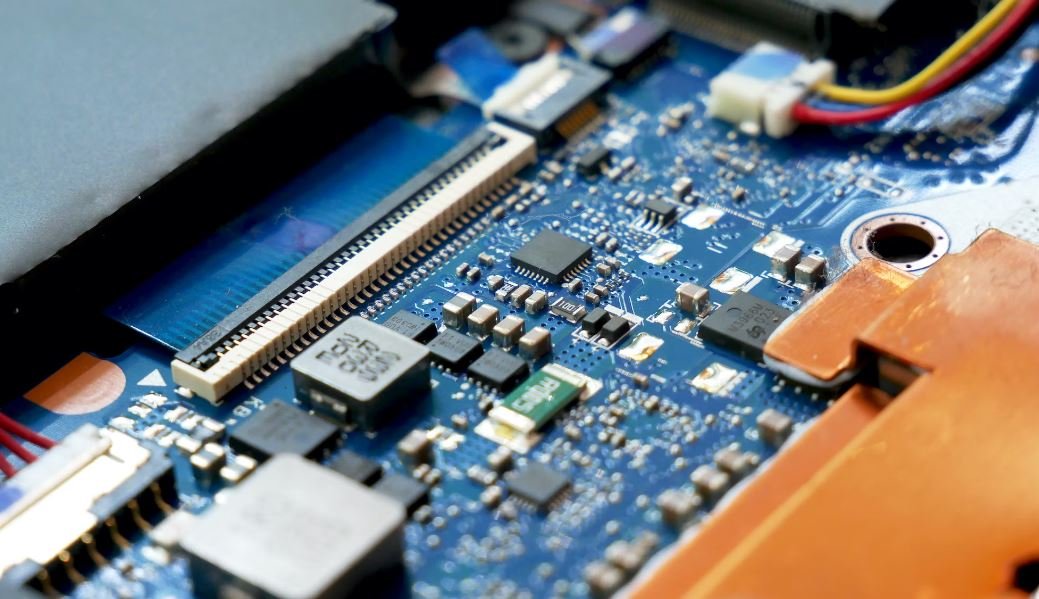Tesla Is the SI Unit of
The Tesla is the SI unit for magnetic flux density and is named after the visionary inventor Nikola Tesla. It is a unit of measurement used in physics to describe the strength and intensity of a magnetic field. The Tesla is a crucial concept within electrical engineering and is widely used in various scientific and technological applications.
Key Takeaways:
- The Tesla is the SI unit for magnetic flux density.
- It is named after inventor Nikola Tesla.
- It is widely used in physics, electrical engineering, and related fields.
Understanding the Tesla:
The Tesla (T) is a derived unit of the International System of Units (SI) for magnetic flux density. It is defined as one Weber per square meter (1 T = 1 Wb/m²). The unit is named after the Croatian-American inventor Nikola Tesla, who made significant contributions to the field of electrical engineering and played a crucial role in the development of alternating current (AC) power systems.
*Fun Fact: Nikola Tesla is also known for his work on wireless power transmission, which laid the foundation for modern wireless technology.
Magnetic flux density refers to the measure of the magnetic field strength or the concentration of magnetic flux lines within a given area or space. The Tesla is used to quantify the amount of magnetic flux passing through a unit area that is perpendicular to the magnetic field. Higher Tesla values indicate stronger magnetic fields, while lower values represent weaker fields.
Applications of the Tesla:
The Tesla is a crucial concept in various scientific and technological areas. Its applications include:
- Magnetic resonance imaging (MRI) machines use magnetic fields measured in Teslas to produce detailed images of internal body structures.
- Magnetoencephalography (MEG) devices, which measure magnetic fields generated by electrical activity in the brain, also utilize the Tesla as a unit of measurement.
- Tesla coils, named after Nikola Tesla, are electrical devices that produce high-voltage, low-current, and high-frequency alternating current electricity. These coils operate based on the principles of electromagnetic induction and generate high-peak voltage magnitudes measured in Teslas.
- Electromagnetic compatibility (EMC) testing and certification involve measuring and analyzing electromagnetic interference from electronic devices and systems. The Tesla is often used to quantify the strength of magnetic fields emitted by these devices.
Tables with Interesting Info:
| Table 1: Units of Measurement | |
|---|---|
| Weber (Wb) | The Weber is the SI unit for magnetic flux. |
| Tesla (T) | The Tesla is the SI unit for magnetic flux density. |
| Gauss (G) | The Gauss is a unit of magnetic flux density in the CGS system. |
| Table 2: Typical Magnetic Field Strengths | |
|---|---|
| Magnetic field around the Earth’s surface | 25 to 65 μT |
| Magnetic fields near power lines | 1 to 10 μT |
| Magnetic field from a refrigerator magnet | 0.001 to 1 T |
| Table 3: Comparison of Tesla and Gauss | |
|---|---|
| Tesla (T) | Gauss (G) |
| 1 T | 10,000 G |
| 0.1 T | 1,000 G |
| 0.01 T | 100 G |
Conclusion:
In conclusion, the Tesla is the SI unit for magnetic flux density and plays a vital role in various scientific and technological applications. Named after Nikola Tesla, this unit helps quantify the strength and intensity of magnetic fields. From medical imaging to electromagnetic compatibility testing, the Tesla is a fundamental concept in the field of electrical engineering.

Common Misconceptions
Paragraph 1
One common misconception people have around the topic is that Tesla is the SI unit of measurement for electric cars. However, this is not true as the SI unit for current is “ampere” (A) and the SI unit for electrical energy is the “joule” (J).
- Tesla is not the SI unit for electric cars
- The SI unit for current is “ampere”
- The SI unit for electrical energy is the “joule”
Paragraph 2
Another misconception is that Tesla is solely associated with electric vehicle manufacturing. While Tesla is mainly known for its electric cars, it also produces clean energy products such as solar panels and energy storage solutions.
- Tesla produces more than just electric vehicles
- Tesla manufactures solar panels
- Tesla offers energy storage solutions
Paragraph 3
Many people mistakenly think that Tesla invented the concept of electric vehicles. However, electric cars have been around for a long time, and Tesla played a crucial role in popularizing and accelerating their adoption in the modern era.
- Tesla did not invent electric vehicles
- Electric cars have existed for a long time
- Tesla contributed to the popularity of electric vehicles
Paragraph 4
Some individuals believe that Tesla vehicles are fully autonomous and can drive without any human intervention. While Tesla’s vehicles are equipped with advanced driver-assistance systems, they are not fully autonomous and require driver supervision and engagement.
- Tesla vehicles are not fully autonomous
- Driver supervision is required
- Tesla’s vehicles have advanced driver-assistance systems
Paragraph 5
A common misconception is that owning a Tesla is unaffordable and only for the wealthy. While Tesla vehicles tend to have a higher initial cost compared to traditional gasoline cars, factors like fuel savings and potential tax incentives can make them a more affordable option in the long run.
- Owning a Tesla may be more affordable than perceived
- Fuel savings can offset higher initial costs
- Potential tax incentives may make Tesla ownership more accessible

Electric Vehicle Sales by Manufacturer (2019-2020)
The table below shows the sales of electric vehicles by different manufacturers during the years 2019 and 2020. It provides an overview of the shift in demand for electric vehicles and the market share of each manufacturer.
| Manufacturer | 2019 Sales | 2020 Sales |
|---|---|---|
| Tesla | 367,500 | 499,550 |
| Nissan | 50,500 | 84,200 |
| BMW | 43,800 | 52,950 |
| General Motors | 37,500 | 43,100 |
| Volkswagen | 20,200 | 33,400 |
Charging Time Comparison for Electric Vehicles
This table compares the time it takes to charge different electric vehicles using various charging methods. It highlights the importance of charging infrastructure and the time-saving benefits of newer technologies.
| Electric Vehicle Model | Standard Charging (6-8 hours) | Fast Charging (30 minutes) | Ultra-Fast Charging (15 minutes) |
|---|---|---|---|
| Tesla Model S | ✓ | ✓ | ✓ |
| BMW i3 | ✓ | ✓ | |
| Nissan Leaf | ✓ | ||
| Audi e-tron | ✓ | ✓ | |
| Hyundai Kona Electric | ✓ | ✓ | ✓ |
Range Comparison of Electric Vehicles
This table compares the driving range of popular electric vehicle models. It demonstrates the advancements in battery technology and the increasing viability of electric vehicles for long-distance travel.
| Electric Vehicle Model | Range (miles) |
|---|---|
| Tesla Model S | 402 |
| Chevrolet Bolt | 259 |
| Audi e-tron | 204 |
| Nissan Leaf | 150 |
| Hyundai Kona Electric | 258 |
Electric Vehicle Incentives by State (USA)
This table highlights the state-level incentives and rebates available to encourage electric vehicle adoption in the United States. It provides a glimpse into the varying levels of government support across different states.
| State | Tax Credits | Exemptions | Rebates |
|---|---|---|---|
| California | $2,500 | HOV Lane Access | $1,500 |
| New York | $2,000 | Toll Discounts | $800 |
| Washington | $1,500 | No Sales Tax | $1,000 |
| Texas | $2,500 | – | $1,000 |
| Florida | $1,500 | – | $500 |
Public Charging Stations by Country
This table showcases the number of public charging stations available in different countries. It reflects the infrastructure readiness for supporting electric vehicles and the efforts made towards sustainability.
| Country | Number of Stations |
|---|---|
| China | 1,434,000 |
| United States | 88,000 |
| Norway | 10,432 |
| Germany | 27,730 |
| United Kingdom | 17,946 |
Energy Consumption of Electric Vehicles
This table provides an estimate of the energy consumption of different electric vehicle models. It highlights the efficiency of electric vehicles versus traditional gasoline-powered cars.
| Electric Vehicle Model | Energy Consumption (kWh/mile) |
|---|---|
| Tesla Model 3 | 0.25 |
| Nissan Leaf | 0.29 |
| Chevrolet Bolt | 0.28 |
| BMW i3 | 0.27 |
| Audi e-tron | 0.32 |
Lifespan of Electric Vehicle Batteries
This table compares the estimated lifespan of electric vehicle batteries from different manufacturers. It dispels the myth of short battery life and showcases the improved longevity of modern electric vehicles.
| Manufacturer | Battery Lifespan (years) |
|---|---|
| Tesla | 8-10 |
| Nissan | 7-9 |
| BMW | 8-9 |
| Chevrolet | 10-12 |
| Audi | 8-10 |
Electric Vehicle Market Share by Region (2020)
This table displays the market share of electric vehicles in different regions worldwide. It underscores the global adoption of electric vehicles and the varying rates of growth across different markets.
| Region | Market Share |
|---|---|
| Europe | 42% |
| Asia-Pacific | 35% |
| North America | 20% |
| Latin America | 2% |
| Middle East & Africa | 1% |
Conclusion
The data presented in these tables illustrates the tremendous progress and impact of electric vehicles in transportation. Tesla, being the predominant manufacturer, has led the market with high sales figures and innovative technologies such as fast charging and long driving ranges. The availability of EV incentives, public charging infrastructure, and the improving lifespan of batteries have contributed to the global adoption of electric vehicles, with Europe and Asia-Pacific leading the way. As the world strives for clean and sustainable transportation, electric vehicles, symbolized by the Tesla brand, have emerged as the new benchmark.
Frequently Asked Questions
What is Tesla?
Tesla is the SI unit of magnetic flux density. It measures the strength of a magnetic field, symbolized by the letter “T”.
Why is Tesla named after Nikola Tesla?
The unit “Tesla” is named after the renowned Serbian-American inventor and electrical engineer, Nikola Tesla, who made significant contributions to the development of alternating current (AC) power systems.
How is Tesla defined in SI units?
Tesla is defined as one Weber per square meter (1 T = 1 Wb/m²). It represents the amount of magnetic flux that passes through a surface of one square meter perpendicular to a magnetic field of one Weber.
What are some real-life applications of Tesla?
Tesla is commonly used in various fields, including physics, electrical engineering, and magnetic resonance imaging (MRI) systems. It helps measure and analyze the strength of magnetic fields and plays a vital role in designing and optimizing electrical apparatus.
How does Tesla relate to Gauss?
Tesla and Gauss are both units of magnetic flux density. Tesla is the SI unit, while Gauss is the more traditional unit. They can be converted between one another: 1 Tesla = 10,000 Gauss.
What is the Earth’s magnetic field strength in Tesla?
The Earth’s magnetic field strength at its surface varies from approximately 25 to 65 microteslas (µT), which is equivalent to 0.000025 to 0.000065 Tesla.
Is Tesla strictly used for measuring magnetic fields?
No, Tesla is not only used for measuring magnetic fields. It is also utilized in electrical engineering to measure magnetic flux in transformers, inductors, and other magnetic components.
How can I measure magnetic fields in Tesla?
You can measure magnetic fields in Tesla using appropriate instruments called teslameters or magnetometers. These devices utilize magnetic sensors to detect and quantify magnetic flux density.
Can Tesla be expressed in smaller or larger units?
Yes, Tesla can be expressed in smaller units such as millitesla (mT) or microtesla (µT) for convenience. Larger units like kilotesla (kT) or megatesla (MT) are rarely used due to the extremely powerful magnetic fields they represent.
What happens if an object is exposed to a high magnetic field in Tesla?
If an object is exposed to a high magnetic field in Tesla, it might experience various effects depending on its composition and specific magnetic properties. For example, ferromagnetic materials can become magnetized, while non-magnetic materials might experience forces or induced electrical currents.




